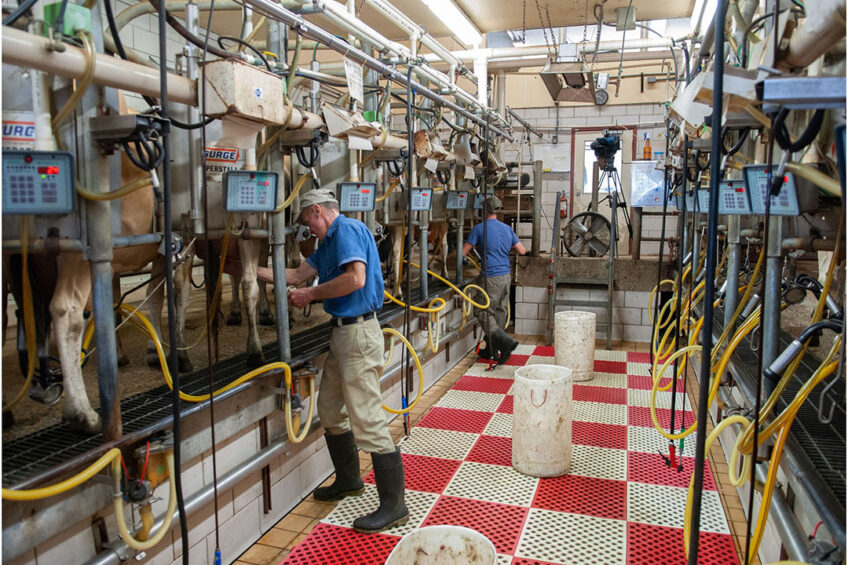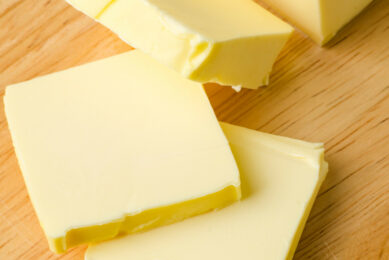Eastern European dairy demand, concerns, profits

A weakening demand, consistently high costs, and tightening environmental regulations contribute to a dramatic set of events currently unravelling in the Eastern European dairy industry.
The current crisis is having a major impact on the Polish dairy industry, Rzeczpospolita, one of the country’s leading economic publications, claimed in early August, citing catastrophic forecasts of several dairy companies and guild unions, all echoing each other.
“Processing costs have increased unimaginably,” complained Agnieszka Maliszewska, general director of the Polish Chamber of Milk Production, a union of key dairy processing companies. “The rising financial burden drives more companies to seek consolidation, external investors, or to shut down their operations.”
Dairy sector in Poland
Behind these headlines are concrete figures. In the first quarter of 2023, the Polish dairy industry generated a gross profit of PLN64.8 million (US$15.2 m) against PLN895 million (US$209.7 m) in the same period of the previous year. The dynamics appear to be even more frustrating if the net profit is compared. In the first quarter of 2023, it plummeted to PLN24.6 million ($5.8 m), all the way down from PLN783.5 million ($183.6 m) in the previous year.
It would be wrong to interpret the statistical data as the Polish dairy business just earned less money. In fact, a large share of dairy processing plants and milk farmers suffer huge losses and barely make their ends meet. Small-scale operations find themselves in the worst predicament, often times on the fast track towards bankruptcy, Maliszewska admitted.
Other Eastern European countries are also struggling against persistent crises in the dairy industry. In June 2023, a protest rally gathered over a thousand milk farmers outside the parliament of Lithuania in Vilnius. Kestutis Navickas, head of the local association of milk producers, claimed that milk production in the country is dying out and wouldn’t survive much longer if farmgate prices stayed at the existing level.
Falling dairy consumption
What frustrates the dairy industry the most is that the current crisis differs from everything they have faced before. To a large extent, it is associated with falling dairy consumption, which, in turn, is partly attributed to a change in consumer habits during the Covid-19 pandemic and, on another part, to rampant inflation.
All European economies are dealing with stubborn inflation in 2023, but in Eastern Europe, where consumers’ wages traditionally are lower than in the West, it weighs heavily on food consumption.
“Nearly 70% of Hungarians find themselves in a tough situation, owing to a cost-of-living crisis: they have no meaningful savings, and their salaries are extremely low in a European comparison,” said Zoltán Pogátsa, a Budapest-based political economist and lecturer at the University of West Hungary.
“The rise in food and utility costs affects low-income people more, as they spend a larger proportion of their income on these expenses, while the purchasing power of their salary stagnates,” Pogátsa said, adding that the people used to be attributed to the middle class also have to revise the content of their shopping carts.
Managers of Hungarian food companies estimated that around 70% of their customers almost consume no dairy products except milk, the price of which is restrained by a mandatory cap imposed by the Hungarian government in 2022 on several food samples in a bid to tame inflation, according to Pogátsa.
“Foods that used to be considered ordinary, such as cottage cheese, have become a luxury. Cottage cheese and sour cream are now unaffordable for the majority,” Pogátsa admitted.
Dairy sector seeking help
Caught between soaring costs and weak consumers’ purchasing power, dairy industry organisations across Eastern Europe have been repeatedly appealing to the authorities seeking help.
In August 2023, the Hungarian milk production council submitted a letter to Zsolt Feldman, the State Secretary for Agriculture and Rural Development, asking for subsidies to outlast “extraordinary market turbulence sweeping through the domestic milk industry, which started with the Covid-19, continued with the Russian-Ukrainian crisis and the historic drought in the European Union”.
In the Baltic countries, dairy producers hoped for grants from the European Commission. So far, these hopes have been in vain. Several appeals have been rejected since the beginning of the year.
“We got an answer [about the subsidies to dairy farmers] – but I would not make it look like the EC refused us. They made it clear that they are monitoring the situation. They said that they saw no reason yet to activate the reserve fund to combat the crisis,” Kestutis Navickas, Lithuanian agricultural minister said, speaking with journalists earlier in 2023.
Some market players, however, believe the state aid would only be a temporary solution, as there is no point in saving a ship already doomed for sinking.
“Unfortunately, the recipe for improving the situation is brutal: we need to produce less. There must be a balance between demand and supply. There is no point in producing more than the consumer consumes. In the end, only the strongest will remain on the market,” Martin Ziaja, member of the board of the Polish federation of cattle breeders and milk producers, told local press in July 2023.
Green agenda takes a toll
On top of rising costs, dairy companies in Eastern Europe also complain about tightening environmental regulations, promising to make their lives even harder.
For instance, Maliszewska explained that the dairy industry is concerned about the upcoming introduction of the deposit refund system. There is also a pending decision on a fee to the new Agricultural Protection Fund, which authorities intend to charge milk companies.
The environmental agenda is growing more popular in Eastern Europe at an extremely wrong time, local dairy companies stated. As the industry struggles with the consequences of the cost-of-living crisis, many operations lack money to bring their business in line with some environmental protection requirements.
“If a company wants to obtain bank funding, like a working capital loan, and they do not adhere to environment protection practices, there is no chance that it will succeed. Large retail chains are already announcing that they will soon require dairy suppliers to report that they run their business in a sustainable manner,” Maliszewska said.
Eastern European farmers believe this factor could make the industry less competitive in the global market. These fears might not be entirely groundless.
Artem Belov, executive director of the Russian union of dairy producers, Soyuzmoloko, said Russia might experience a surge in dairy exports in the foreseeable future. He explained that Russian milk farmers have strong state aid, while in several countries where farmers are subject to excessive ecological regulations, output is slumping.
“We spoke with dairy industry representatives from other countries and found out that, according to their forecasts, in their countries, milk production could plummet by 15%, owing to the implementation of green agenda,” Belov outlined, speaking during an Agro Outlook Russia-2023 conference in Moscow in July 2023.
Indeed, the Russian government has recently imposed a 100% subsidy on logistics costs associated with dairy exports. Russian market players claimed that this should help companies strengthen their position on the global market and better compete with suppliers from other countries, including Europe.
Joining forces
In the face of losing their business, some companies see salvation in deepening cooperation within agricultural cooperatives. As explained by Rolands Feldmanis, general director of the Latvian Agricultural Cooperatives Association, this model has already proved to be effective in some countries of Western Europe.
“In Ireland, 96% of all producers are united in cooperatives, and they have their own dairy production and processing. This allows them to be flexible,” Feldmanis said, adding that the retail price of dairy products in Ireland is even lower than the current Latvian level.
“We hope that the same scheme will be adopted in Latvia, but it takes time; it requires cooperatives to become stronger and get their own milk processing capacities,” he added.
Basically, vertically integrated dairy companies operating feed mills, milk farms, and dairy processing capacities perform better on the market than independent supply chain members. However, in Eastern Europe, most milk farms are independent, often family-owned operations, and the role of agricultural cooperatives is moderate.
As of today, several cooperatives include milk farms but lack processing capacities. The outsiders, to interpret explained, want to buy raw milk as cheaply as possible and sell dairy products as expensive as possible. Within the cooperative, it is possible to agree on some rules that would suit everyone, and thanks to lower costs, all members of the supply chain eventually will win, he added.
This is also a way to make local dairy products more competitive on the global market, he added.
Join 13,000+ subscribers
Subscribe to our newsletter to stay updated about all the need-to-know content in the dairy sector, two times a week.










